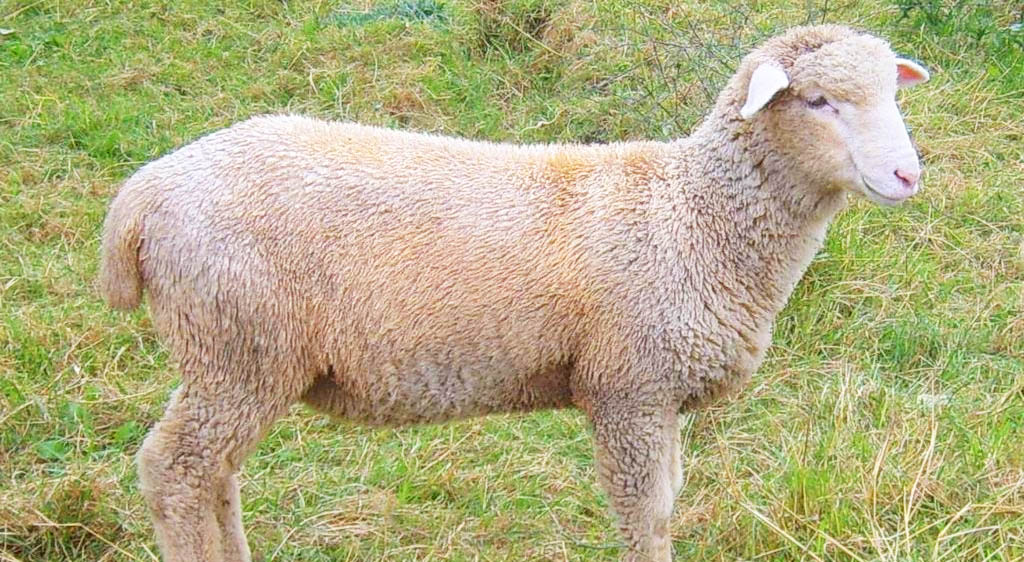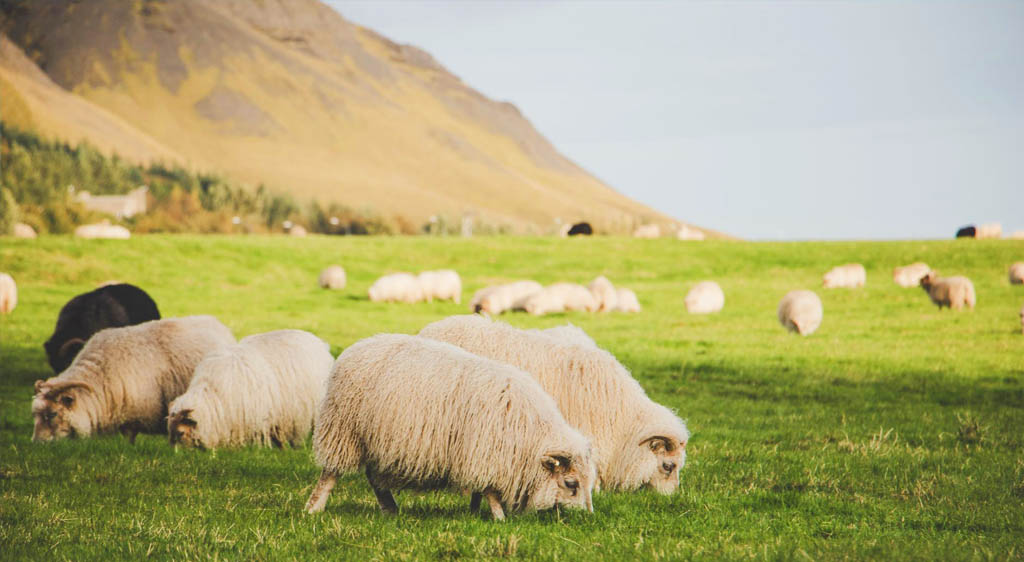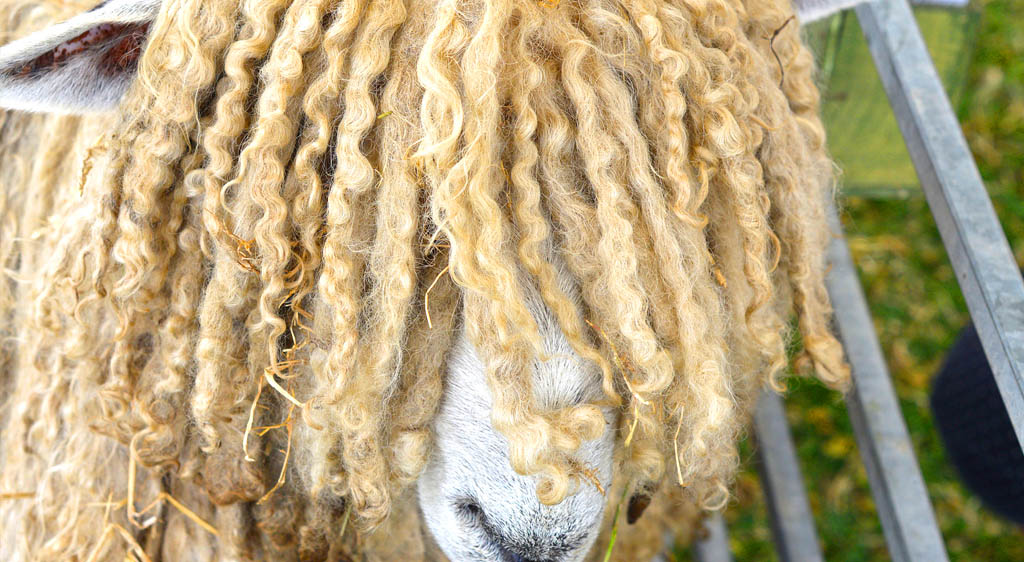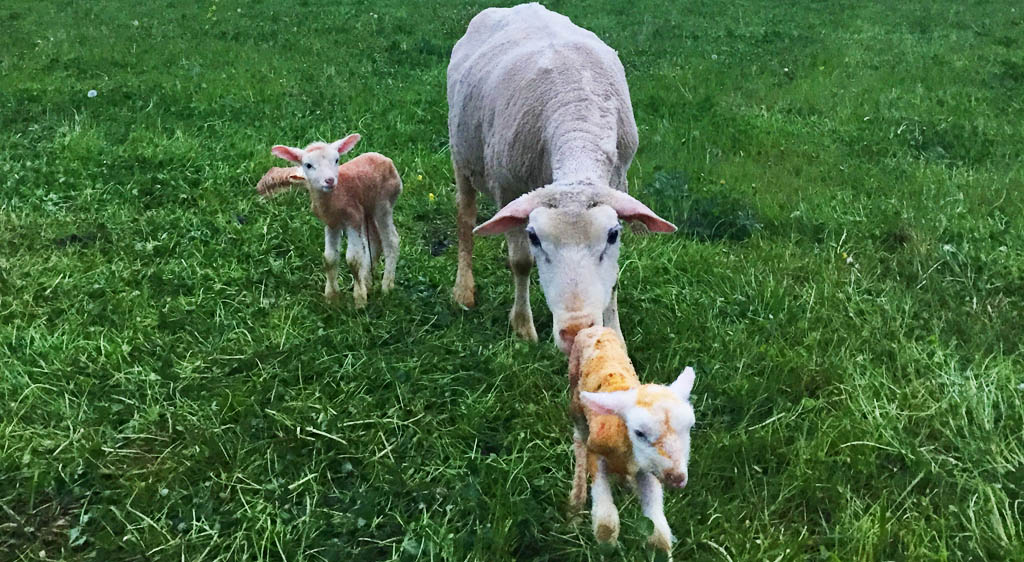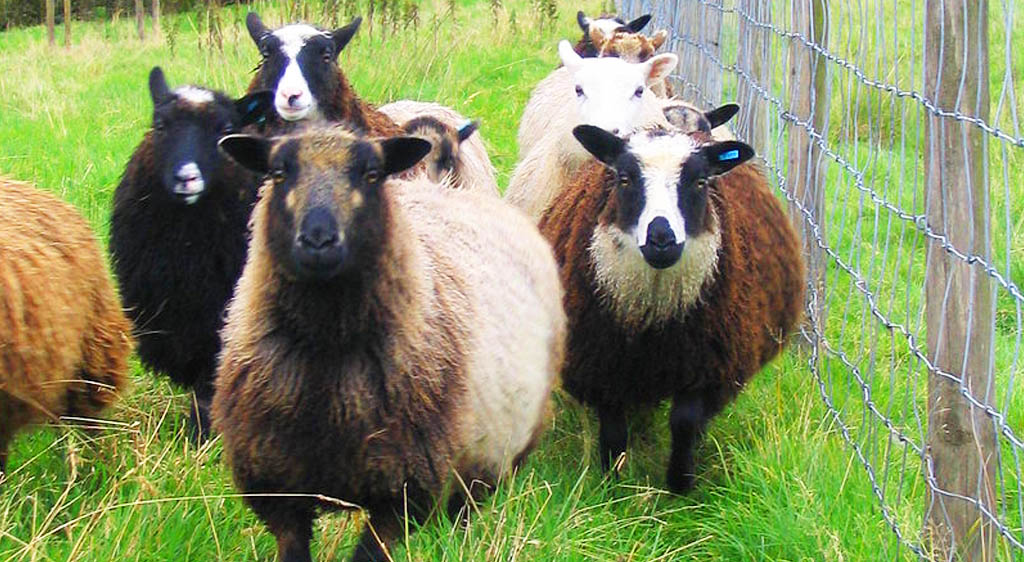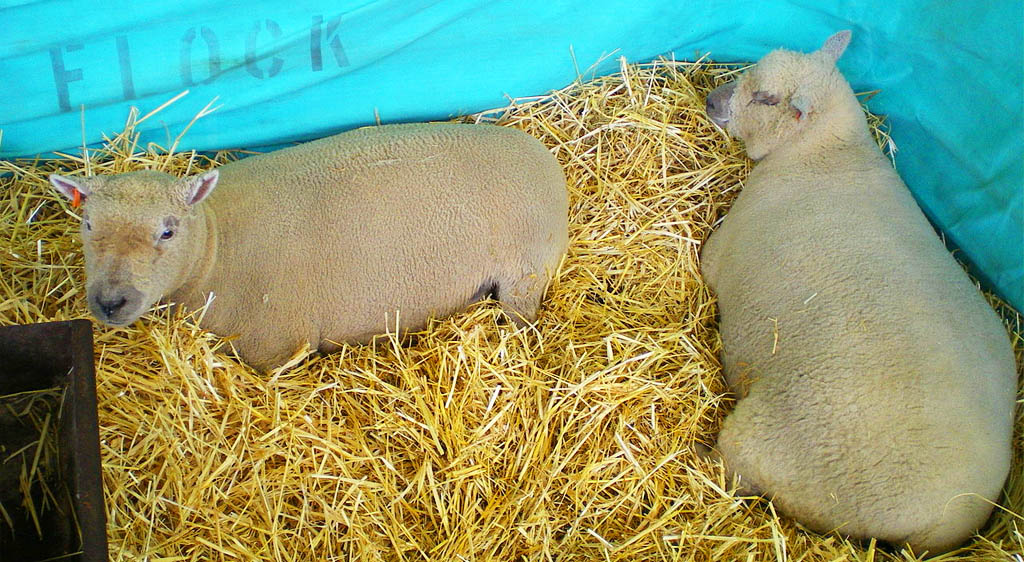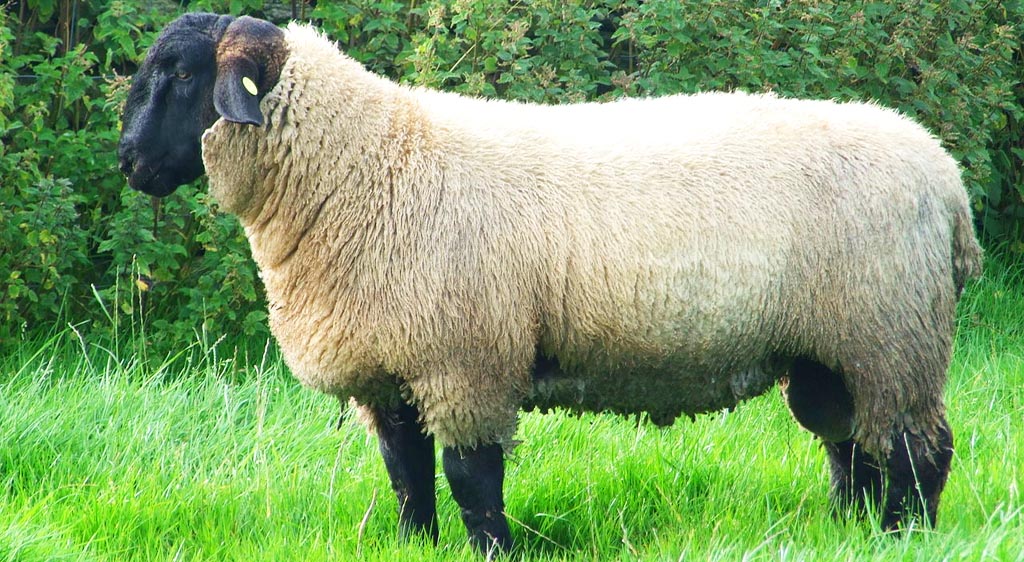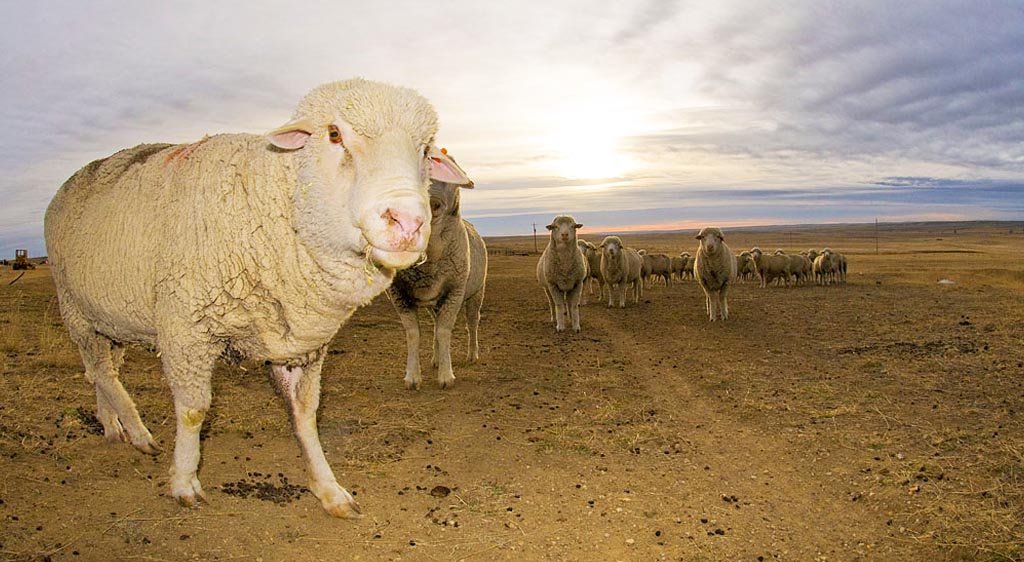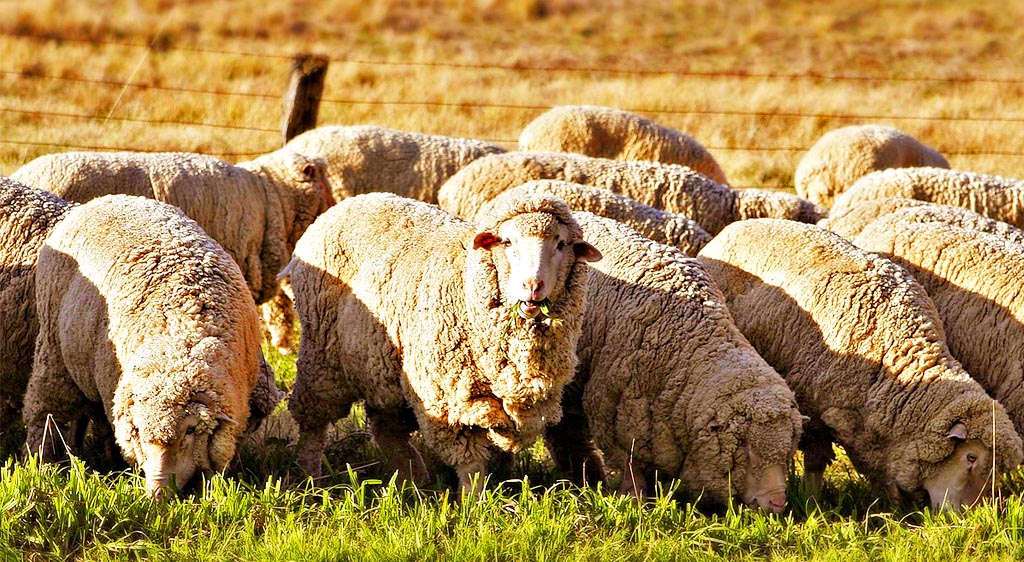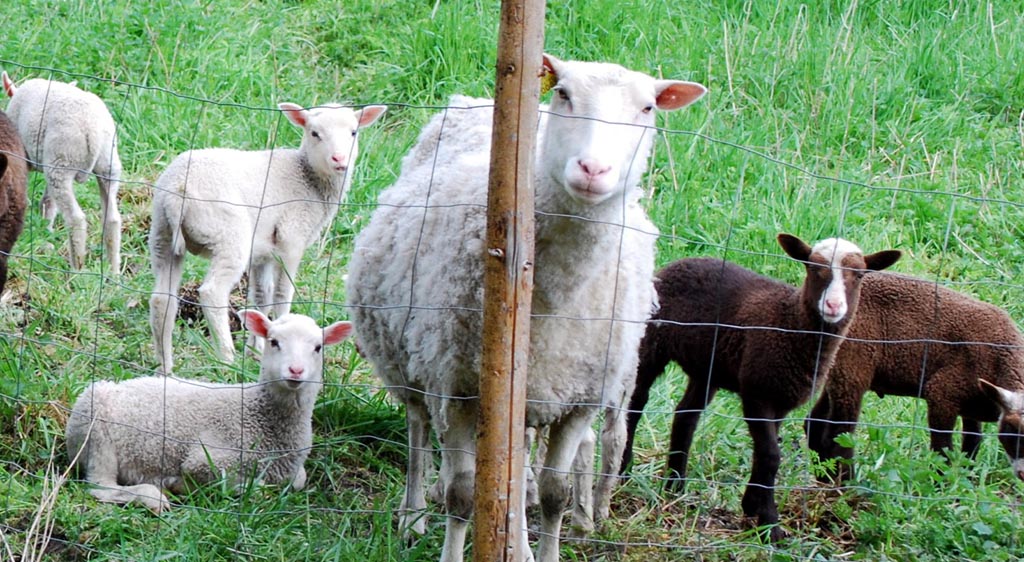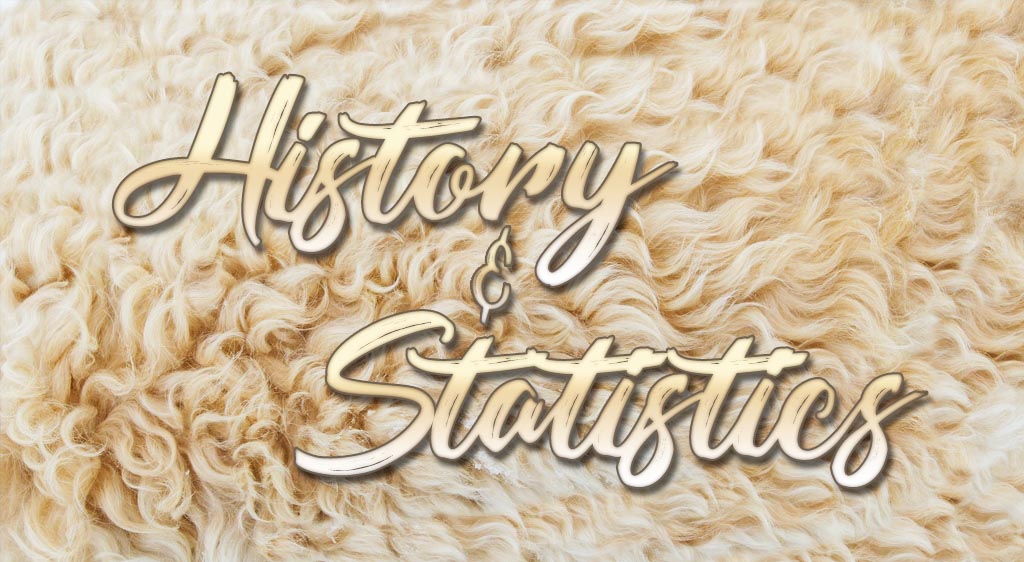Types of Sheep that Produce Wool
Humans domesticated sheep between 9,000 and 7,000 BC. However, they were mostly hairy and not wooly. Through selective breeding, woolly sheep eventually arrived. The first woven wool garments date back between 400 and 300 BC. It was also around this time when woolly sheep came to Europe. Before, humans plucked wool from sheep by hand or by bronze combs. Today, wool is typically harvested by shearing live sheep using powered hand clippers. Much of the wool produced in the world comes from Australia, China, New Zealand, and the Commonwealth of Independent States. The wool is typically exported to textile manufacturers. Although there are other textile fibers that have properties that are better than those of wool, wool still has unique physical and chemical properties that make it stand out from other fibers. Moreover, different types of sheep that produce wool exist today, giving us more diversity in the material.
Highlights on Sheep Wool
- Around 1.16 billion sheep worldwide produce enough wool each year to make one sweater per person on the planet.
- In 2018, 1.155 million kg of clean raw wool were produced from sheep around the world.
- Sheep numbers in 2018 were the highest since 1992.
- About 14% of the world’s sheep are in China.
- However, about 25% of the wool produced in the world come from Australia.
- Around 500 different breeds of sheep grow wool in various colors, textures, and lengths.
- Wool fiber diameter can be smaller than 24.5 µm.
- Only around 1% of wool is used for apparel.
Types of Sheep that Produce Wool
1. Columbia Sheep
Colombia sheep – © soxophone player – https://
The sheep are bred for both meat and wool. Their long strong legs were developed to carry the heavy coat that fits tightly to their body. They grow relatively fast, making them ideal for a demanding market. The fleece caps the sheep’s head to its polled horns. The fleece also covers the legs. The Columbia are prolific breeders and they are also a hardy breed that can take care of their young. The ewes are excellent nurturing mothers. Their wool is good for knitted garments, clothes, and other apparel.
2. Icelandic Sheep
Icelandic sheep – © Joan Costa
One of the most known types of sheep that produce wool is the Icelandic sheep. They are regarded as one of the oldest and purest sheep breeds. They have three main production purposes: fleece, milk, and meat. In order to keep the Icelandic sheep breed pure, there are strict rules about handling the sheep. It is also illegal to import sheep into Iceland. The wool has been used in tapestries, twine, embroidery thread, rope, and even sails.
3. Lincoln Sheep
Lincoln sheep – © Nhojjohn – https://creativecommons.org/
The Lincoln sheep was specifically bred to produce the heaviest, longest, and most lustrous fleece of any breed in the world. Its ancestors were white-fleeced sheep imported to England from the mainland European continent during the Roman occupation. Their body and legs are strong and muscular to carry their heavy wool. Their wool also hangs as locks over their forehead and usually covers their eyes. It may also cover their legs up to the hocks or cover the whole legs entirely, especially the hind legs. The wool is good for handcrafts, spinning, and blending with other fiber such as mohair to make a stronger product.
4. Polypay Sheep
Polypay sheep – © Patrick Schloss – https://creativecommons.org/
The Polypay was developed in the United States in the 1960s at the Sheep Experiment Stations in Dubois, Idaho. Dr. C.V. Hulet led the scientists that developed the Polypay. The aim was to have a more profitable sheep breed that can produce two lamb crops and one wool crop per year. Specifically, objectives were a breed with:
- High lifetime prolificacy
- Large lamb crop at one year of age
- Ability to lamb more frequently than once per year
- Rapid growth rate of lambs
- Desirable carcass quality
Four other breeds were used to develop the Polypay: (1) The Finnsheep for their high prolificacy, early puberty, and short gestation; (2) The Rambouillet for their adaptability, hardiness, productivity, and quality fleeces; (3) The Targhee for their large body size, long breeding season, and quality fleeces; and (4) The Dorset for their superior mothering ability, carcass quality, early puberty, and long breeding season. The name is a combination of “poly” meaning many and “pay” implying profitable.
5. Shetland Sheep
Shetland sheep – © Andrew – CC 2.0
The Shetland sheep is the smallest breed of Sheep of the British breeds. They can be traced back to thousands of years. The ancestors were probably sheep the Viking settlers brought to the Shetland Islands in Scotland. However, the Shetland can be found in different parts of the world today. It also retains many of the traits of wild sheep. Despite its small size, the Shetland is adaptive, being able to survive harsh conditions. Shetland sheep are very hardy, good mothers, easy lambers and produce plenty of milk. Moreover, their wool also comes in different colors, namely, moorit (reddy/brown), shaela (silvery grey), fawn, grey, dark brown and black.
6. Southdown Sheep
Southdown sheep – © Mdcollins1984 – CC BY-SA 3.0
Southdown sheep are a small breed that are good for a homestead type of farm. They are docile and are thus easy to manage. The sizes of Southdown range from medium to small. They mature early and have good lambing ability and average milk production. They are mostly bred for their meat, but their wool can also be used for knitwear.
7. Suffolk Sheep
Suffolk sheep – © J gareth p – CC BY-SA 3.0
The Suffolk is the product of the crossbreeding between the Southdown rams and Norfolk Horned ewes. The Suffolk’s face, head, and legs from the knee down are free of wool. The wool forms a collar around their necks making them look like they have a woolen bomber jacket on.
8. Targhee Sheep
Targhee sheep – © Yathin sk – CC BY-SA 3.0
The Targhee was developed by the United States Sheep Experiment Station and is one of the youngest breeds the country developed. The Targhee was bred mainly for its wool, which is soft, lustrous, elastic, and resilient. It is mostly used for garments that are worn next to the skin. However, their meat also has good quality.
9. Merino Sheep
Merino sheep © Fir0002/Flagstaffotos – http://www.gnu.org/licenses/
Merino sheep originated from Spain and are known for their fine and soft wool. Because of its excellent wool, the Merino sheep were used for developing other breeds. The Merino was imported to Australia and its wool was refined through selective breeding. Wool grows on the Merino sheep face, but not enough to blind them. However, their wool does not stop growing. It can eventually lead to heat stress for the animals, so they must get sheered at least once a year.
10. Finnsheep
Finnsheep © David Smith – CC 2.0
The Finnsheep is an old breed that is native to Finland. White is the dominant wool color for Finnsheep, but there are also some that are solid black or spotted black and white. Less common colors are grey, brown and fawn. The wool has several good qualities. It is durable, lightweight, and soft. It also has excellent luster, and very silky with a great curl. Moreover, the wool blends easily with other fibers.
Types of Sheep that Produce Wool: Statistics and History
11. The Columbia sheep was bred in 1912 in the United States by the country’s Department of Agriculture.
The Columbia sheep are also one of the first breeds in the country. The Columbia was a cross between high quality Rambouillet ewes and Lincoln rams with long wool. Mature Columbia rams weigh between 100 to 135 kg while ewes weigh 68 to 102 kg.
12. The Columbia can produce 1 to 5 kg of wool per year.
The wool quality has a spin count of in the range of 50s and 60s.The quality is classified as medium. The staple length is 9 to 14 cm (3.5 to 5 inches) and the fiber diameter is between 24 and 31 μm.
13. The Icelandic sheep have been around since the Vikings brought them to Iceland around 1,100 years ago.
The rams weigh around 90 to 100 kg while the ewes weigh around 1(68 – 73 kg. Lambing rate is between 170 and 180%, but it can be larger using more intensive management. The Icelandic sheep mature quickly, with the ewes being able to lamb at 12 months of age. Rams can start breeding at 7 months old.
14. Wool accounts for less than 15% of income from Icelandic sheep.
Despite this low number, the sheep is known for their wool, which is classified as medium. The fleece has an inner and outer coat typical of more primitive breeds. The fine undercoat is called Thel and the long, coarser outercoat called Tog. The Thel staple length is 5 to 10 cm (2 to 4 inches) and the fiber diameter is 19 to 22 μm. On the other hand, the Tog staple length is 15 to 20 cm (6 to 8 inches) and the fiber is 27 to 30 μm.
15. The Lincoln breed was developed in the mid-1800s by cross-breeding Lincolnshire sheep and the improved Leicesters of renowned agriculturist, Robert Leicester.
Lincoln sheep were eventually brought to the United States in the late 1800.12 Rams would weigh between 110 to 160 kg while ewes would weigh between 91 and 114 kg. These traits make the Lincoln the largest sheep breed.
16. The Lincoln would produce wool between 6 and 8 months of age.
The wool is lustrous and long with a beautiful flowing crimp. It is of high quality that is good for doll making, hand spinning, hand crafting, felting, and other crafts. The staple length is 10 to 15 cm (4 to 6 inches) and the fiber diameter is between 36 and 40 μm.
17. The first crosses for the development of the Polypay were made in 1968.
On the other hand, the first 4-breed composites were made in 1970. The name was eventually made in 1975.8 Today, rams weigh between 108 and 136 kg while ewes weight around 72 kg. The ewes can breed more than once a year. They are prolific, with good mothering instincts and are good milkers.
18. The Polypay can produce 3 to 4 kg of wool per year.
The wool is classified as medium. It has a spin count in the range of 48s and 60s. The wool is good for knitted garments, blankets, clothes, and more. The staple length is between 8 to 10 cm (3 to 5 inches) and the fiber diameter is between 24 and 31 μm.
19. Shetland wool has a Bradford count that is usually in the upper 50s or lower 60s.
The wool has a staple length of 5 to 12 cm (2 to 4.5 inches) and the fiber diameter is between 20 to 25 μm. Fleeces usually weigh between 1 to 2 kg.
20. Shetland has 11 main colors as well as 30 markings.
However, many of these colors have become rare since white has been dominantly in demand.
21. The Southdown was developed in Sussex, England during the late 1700s and early 1800s.
They are one of the oldest breeds of “down” sheep from the United Kingdom with consistently good wool and meat quality. Some even consider the Southland as one of the most important breeds in the UK.
22. Southdown sheep can produce 1 to 2.3 kg of wool per year.
The wool is fine to medium. The staple length is between 4 to 6 cm (1.5 to 2.4 inches) and the fiber diameter is between 23 and 29 μm.
23. The Suffolk sheep were developed over 200 years ago.
The breed was recognized in 1810. They are also the leading terminal sire in the British Islands. Today, the Suffolk can be found in different parts of the world. It is one of the most popular breeds in the United States. Rams can weigh between 110 to 160 kg while ewes can weigh between 80 and 160 kg.
24. When the wool is harvested and cleaned, one can get around a 50 to 60% yield from the full weight of the fleece.
The Suffolk can produce 2.3 to 3.6 kg of wool per year. The quality is classified as medium and has a spin count of 48s to 58s. The staple length is 5 to 7.62 cm (2 to 3 inches) and the fiber diameter is 25 to 33 μm.
25. Development of the Targhee sheep started in 1868.
By 1938, after three generations, a desirable breed was obtained. New breeding schemes were developed, and the number of Targhees at the Experiment Station was boosted to over 1,000 head. However, as the development was ongoing, other breeders were also trying to develop the same type of sheep. By the late 1940s, many Western ranches started breeding Targhees.
26. The Targhee can produce 4.5 to 6.3 kg of wool per year.
The Targhee was developed mainly for its wool. The fleece is uniform, fine, dense, and has a high crimp. The quality is classified as medium with a spin count of 58s to 64s. The staple length is 7.5 to 11 cm (3 to 4.3 inches) and the fiber diameter is 21 to 25 μm.
27. The Merino sheep origins can be traced back to the beginning of the 12th century.
In 1797, Merino sheep were brought to Australia where the environment was suitable. In 1807, the first Australian-produced fleece was sold in England. By the late 19th century, wool became Australia’s major export.
28. Merino sheep can produce 5.4 to 9 kg of wool per year.
Merino wool is known to have excellent quality. The wool has great softness, shine, and breathability. Fibers of Merino wool are softer, finer, and more sensitive that many other fabrics. This makes products such as the merino wool blanket incredibly comfortable. The wool has a spin count of 64s to 80s. The staple length is 6.35 to 10 cm (2 to 4 inches) and the fiber diameter is 17 to 22 μm.
29. The Finnsheep breed has been around for over 700 years.
The Finnsheep were first imported to North America by the University of Manitoba, Canada in 1966. Private breeders eventually brought some progeny to the United States.
30. Finnsheep can produce 1.8 to 4 kg of wool per year.
Finnsheep also tend to come in a few colors around the world, so there is the possibility of numerous natural wool colors. The wool spin count is 53s to 54s. The staple length is 2 to 7 cm (0.8 to 2.7 inches), but some can go as long as 18 cm (7 inches). The fiber diameter is 24 to 31 μm.
Conclusion
Wool has been part of the intricate weaves of human history for centuries. Besides being breathable, durable, elastic and elastic, wool has other traits that sets it apart. Since sheep naturally produce wool, it therefore has less environmental impact. Wool offers better protection against UV light than most synthetic textiles and cotton. Amazingly, wool is also fire retardant. If it catches on fire, it burns slowly. For cold weather, wool is an excellent insulator. Although we have other natural and synthetic textile today, wool still has its place and so do the sheep that produce it.
References
History of Clothing:
http://www.historyofclothing.com/textile-history/wool-history/
Textile School:
https://www.textileschool.com/162/wool-fiber-basics-characteristics-properties/
Common Objective:
https://www.commonobjective.co/article/global-wool-production-and-sustainable-standards
International Wool Textile Organisation:
https://www.iwto.org/wool-production
Domestic Animal Breeds:
https://domesticanimalbreeds.com/18-best-wool-producing-sheep-breeds/
Oaklahoma State University:
http://afs.okstate.edu/breeds/sheep/
National Lincoln Sheep Breeders Association:
https://www.lincolnsheep.com/about-lincoln/history-of-the-breed/
Britannica:
https://www.britannica.com/animal/Merino-breed-of-sheep
Finnsheep Breeders Association:
http://www.finnsheep.org/finnsheep-history-characteristics/
The Livestock Conservancy:
https://livestockconservancy.org/index.php/heritage/internal/lincoln
National Museum Australia:
https://www.nma.gov.au/defining-moments/resources/merino-sheep-introduced
Simpson, W. S. & Crawshow, G. H. (2002). Wool: Science and technology. Boca Raton, FL, USA: CRC Press
Bhat, G. (2017). Structure and properties of high-performance fibers. Duxford, CB, UK: Woodhead Publishing.
